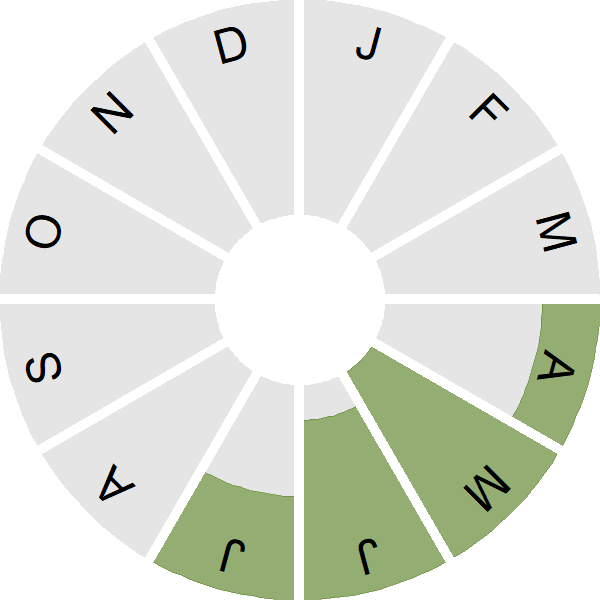Savi's Warbler
Introduction
What it lacks in colour, the reedbed-loving plain brown Savi's Warbler makes up for with its loud insect-like buzzing song.
The Savi's Warbler is a very rare breeding bird in the UK, largely confined to a discrete number of reedbed sites in East Anglia and southern England. It is a summer visitor from trans-Saharan Africa and can be heard singing by a lucky few between May and August.
An estimated five to 10 pairs of Savi's Warbler breed in the UK. Savi's Warblers can be found when on migration but even at this time, despite the European breeding population estimate of around one million pairs, the species is still very rare here.
Key Stats
Identification
Songs and Calls
Song:
Status and Trends
Conservation Status
Population Change
Population trends of this scarce species are not routinely monitored.
Distribution
Savi's Warbler is now a very localised breeding species. During 2008–11 breeding-season records were scattered throughout southern and eastern England between Lincolnshire and Cornwall, but confirmed breeding was only recorded in 2010 when two pairs bred in Sussex.
Occupied 10-km squares in UK
or view it on Bird Atlas Mapstore.
European Distribution Map
Distribution Change
Change in occupied 10-km squares in the UK
or view it on Bird Atlas Mapstore.
Seasonality
Savi's Warbler is a rare summer visitor, recorded from April to July; birds are probably under-recorded after males cease singing.
Weekly pattern of occurrence
The graph shows when the species is present in the UK, with taller bars indicating a higher likelihood of encountering the species in appropriate regions and habitats.

Movement
Britain & Ireland movement
Foreign locations of birds ringed or recovered in Britain & Ireland
Dots show the foreign destinations of birds ringed in Britain & Ireland, and the origins of birds ringed overseas that were subsequently recaptured, resighted or found dead in Britain & Ireland. Dot colours indicate the time of year that the species was present at the location.
- Winter (Nov-Feb)
- Spring (Mar-Apr)
- Summer (May-Jul)
- Autumn (Aug-Oct)

European movements
EuroBirdPortal uses birdwatcher's records, such as those logged in BirdTrack to map the flows of birds as they arrive and depart Europe. See maps for this species here.
The Eurasian-African Migration Atlas shows movements of individual birds ringed or recovered in Europe. See maps for this species here.
Biology
Productivity and Nesting
Nesting timing
Egg measurements
Clutch Size
Survival and Longevity
Survival is shown as the proportion of birds surviving from one year to the next and is derived from bird ringing data. It can also be used to estimate how long birds typically live.
View number ringed each year in the Online Ringing Report.
Biometrics
Wing length and body weights are from live birds (source).
Ring Size
Classification, names and codes
Classification and Codes
- Order: Passeriformes
- Family: Locustellidae
- Scientific name: Locustella luscinioides
- Authority: Savi, 1824
- BTO 2-letter code: VI
- BTO 5-letter code: SAVWA
- Euring code number: 12380
Alternate species names
- Catalan: boscaler comú
- Czech: cvrcilka slavíková
- Danish: Savisanger
- Dutch: Snor
- Estonian: roo-ritsiklind
- Finnish: ruokosirkkalintu
- French: Locustelle luscinioïde
- German: Rohrschwirl
- Hungarian: nádi tücsökmadár
- Icelandic: Flóðsöngvari
- Irish: Ceolaire Savi
- Italian: Salciaiola
- Latvian: Seivi kaukis
- Lithuanian: nendrinis žiogelis
- Norwegian: Sumpsanger
- Polish: brzeczka
- Portuguese: cigarrinha-ruiva
- Slovak: svrciak slávikovitý
- Slovenian: trstni cvrcalec
- Spanish: Buscarla unicolor
- Swedish: vassångare
- Welsh: Telor Savi
- English folkname(s): Night-reeler

